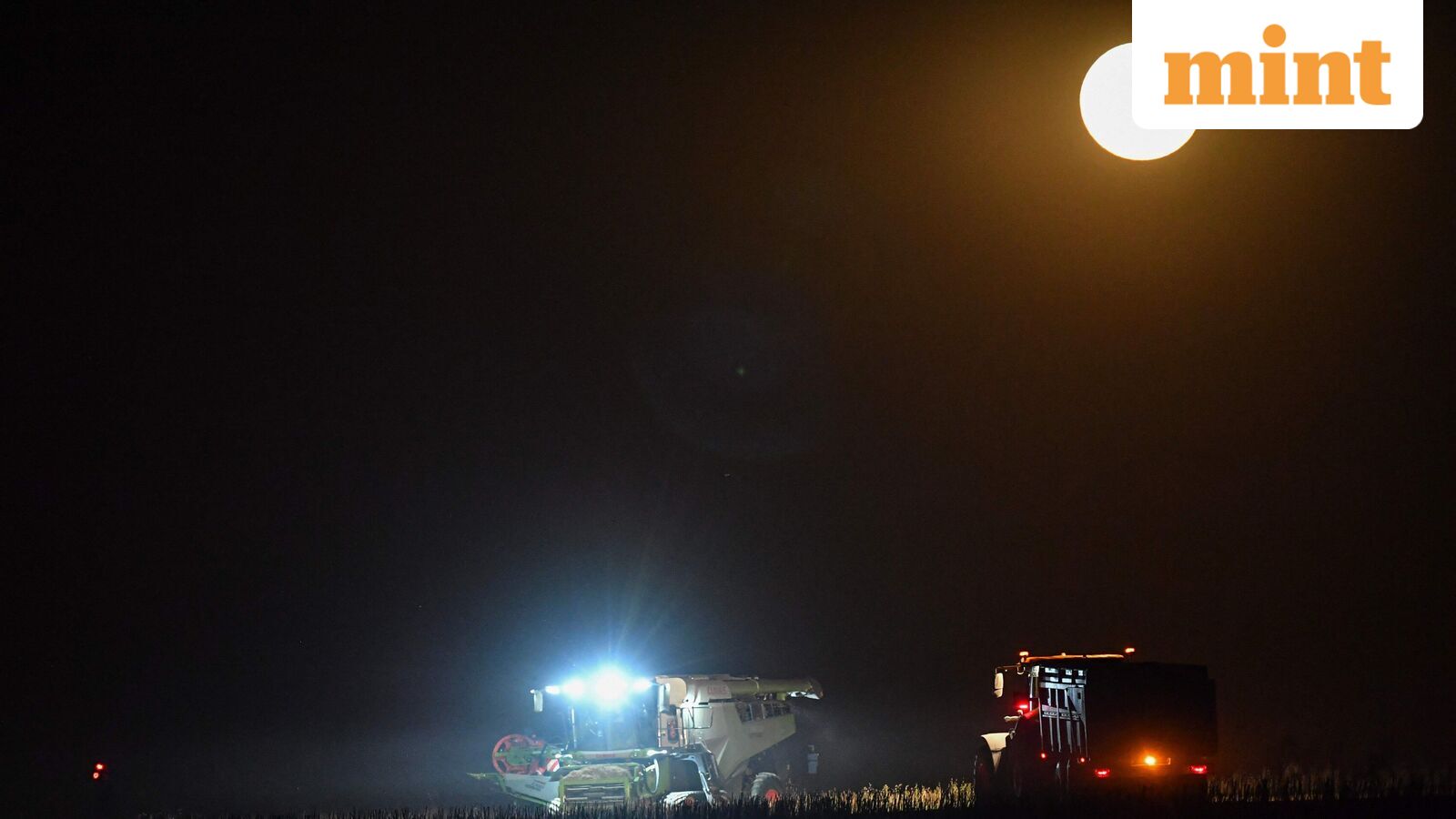Science
Witness the Spectacular Harvest Supermoon on October 6-7, 2025

The upcoming Harvest Moon, set to rise on October 6, 2025, offers a unique celestial spectacle for skywatchers around the world. This year, it will reach its full phase at 03:48 GMT on October 7. Notably, the Harvest Moon occurs closest to the September equinox, marking the transition into autumn in the Northern Hemisphere. In 2025, this full moon will appear later than usual, a phenomenon that takes place only 18 times between 1970 and 2050.
What Makes the Harvest Moon Special?
The Harvest Moon is distinguished by its timing and brightness. It coincides with the moon’s perigee, the point in its orbit where it is closest to Earth, making it a supermoon this year. Traditionally, this full moon provided farmers with extended evening light to harvest crops such as corn and beans. Although it is often believed that the Harvest Moon remains visible longer than other full moons, this is not entirely accurate; the full moon closest to the winter solstice holds that title.
What sets the Harvest Moon apart is its ability to rise around sunset and maintain a similar rise time over several nights. This consistency creates a captivating display, as the moon appears larger and more vividly colored when it is low on the horizon, due to viewing it through a thicker layer of Earth’s atmosphere.
Viewing Times Across India
In India, the Harvest Supermoon will be observable, with specific moonrise and moonset times varying by city. In New Delhi, the moon will rise at 16:57 and set at 04:37 the following morning. Mumbai will see the moon rise slightly earlier at 16:17, setting at 03:55 AM. In Kolkata, the moonrise is scheduled for 16:43, with a moonset at 04:20 AM. Chennai will witness moonrise at 16:48 and moonset at 04:25 AM. Bengaluru, on the other hand, will experience a later moonrise at 17:29, but it will set earlier, at 23:44 the same night.
Optimal Viewing Conditions
To fully appreciate the Harvest Moon, it’s advisable to find a location with an unobstructed view of the eastern horizon, such as a rooftop, park, or open field. Avoiding areas with significant light pollution will enhance visibility. While no special equipment is necessary to enjoy the moon’s beauty, binoculars or a telescope can provide a closer look at its surface details, such as craters and ridges.
Photography enthusiasts may consider using a tripod and a zoom lens to capture the moon as it rises. During this phase, the moon often takes on a golden-orange hue, adding to its allure.
The next opportunity to view a Harvest Moon will not occur until 2028, making this event particularly noteworthy for astronomy fans and casual observers alike.
-

 World5 months ago
World5 months agoSBI Announces QIP Floor Price at ₹811.05 Per Share
-

 Lifestyle5 months ago
Lifestyle5 months agoCept Unveils ₹3.1 Crore Urban Mobility Plan for Sustainable Growth
-

 Science4 months ago
Science4 months agoNew Blood Group Discovered in South Indian Woman at Rotary Centre
-

 World5 months ago
World5 months agoTorrential Rains Cause Flash Flooding in New York and New Jersey
-

 Top Stories5 months ago
Top Stories5 months agoKonkani Cultural Organisation to Host Pearl Jubilee in Abu Dhabi
-

 Sports4 months ago
Sports4 months agoBroad Advocates for Bowling Change Ahead of Final Test Against India
-

 Science5 months ago
Science5 months agoNothing Headphone 1 Review: A Bold Contender in Audio Design
-

 Top Stories5 months ago
Top Stories5 months agoAir India Crash Investigation Highlights Boeing Fuel Switch Concerns
-

 Business5 months ago
Business5 months agoIndian Stock Market Rebounds: Sensex and Nifty Rise After Four-Day Decline
-

 Sports4 months ago
Sports4 months agoCristian Totti Retires at 19: Pressure of Fame Takes Toll
-

 Politics5 months ago
Politics5 months agoAbandoned Doberman Finds New Home After Journey to Prague
-

 Top Stories5 months ago
Top Stories5 months agoPatna Bank Manager Abhishek Varun Found Dead in Well









